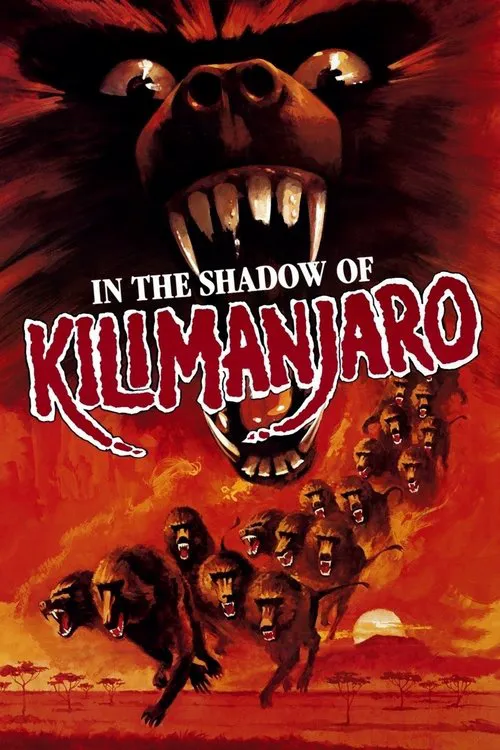In the Shadow of Kilimanjaro

Plot
In the Shadow of Kilimanjaro is a gripping and intense survival thriller that takes place in the face of a devastating drought in Africa. The story begins with the severe dryness of the land, causing food and water to become increasingly scarce. As a result, an extraordinary and terrifying phenomenon unfolds: a flock of 90,000 wild baboons, desperate to survive, suddenly starts hunting down and devouring humans. The movie centers around a group of individuals, including a young couple, Tom and Sarah, who are caught in the midst of this chaos. They try to flee the area, but the baboons are relentless and efficient hunters, making it extremely difficult for them to escape unscathed. The pair faces numerous close calls, struggling to evade the hungry monkeys as they stalk their prey through the barren landscape. The story delves into the psychological and emotional toll of being constantly hunted by ferocious animals, adding an element of horror to the already dire situation. Tom and Sarah's relationship begins to fray under the strain, as they fight for survival and grapple with the reality of their situation. Meanwhile, a lone park ranger named Kate tries to contain the crisis, understanding the catastrophic consequences of the baboons' actions. She is faced with a daunting task as she tries to navigate the treacherous terrain and fend off the marauding monkeys. As Kate witnesses the gruesome scenes unfolding around her, she starts to unravel the mystery behind the sudden emergence of this aggressive baboon behavior. In a quest for answers, Kate discovers that the extreme drought and food scarcity have pushed the baboon population to the edge of survival. Without their usual sources of sustenance, the monkeys have adapted to their environment by turning to the most readily available food source – humans. The film suggests that the baboons are driven by a primal and ancient instinct to survive, rather than malice or aggression towards humans. As Kate delves deeper into the story, she learns that a small group of survivors, led by a grizzled and resourceful old man named Marcus, has banded together in an abandoned school. This group, comprising individuals from different backgrounds, has formed a fragile bond as they fight for their lives amidst the chaos. Marcus, having lived through the devastating consequences of human neglect and exploitation, has become an unlikely leader in this situation, guiding the group through the wilderness and providing crucial insights into the behavior of the baboons. Throughout the movie, the visuals are breathtaking and raw, capturing the harsh realities of the African landscape under the extreme conditions of the drought. The cinematography beautifully reflects the isolation and desolation experienced by the survivors as they navigate the unforgiving environment, emphasizing the vulnerability and disorientation that accompanies being hunted by nature's ferocious creatures. As In the Shadow of Kilimanjaro reaches its tense and suspenseful climax, Kate's group must confront the true extent of the baboons' aggression, putting their trust and resourcefulness to the ultimate test. They discover that the monkeys are increasingly intelligent and coordinated, having become more efficient hunters in the face of the drought and food scarcity. In the end, as the surviving characters finally reach the safety of a nearby camp, they are met with a somber and haunting realization: the true extent of the devastation caused by human activities has unleashed this unprecedented catastrophe, and the world will have to acknowledge and adapt to the changed dynamics of the African ecosystem. In the Shadow of Kilimanjaro is a gripping thriller that not only entertains but also raises important questions about the relationship between humans and the natural world, the consequences of human neglect and exploitation, and the delicate balance of the ecosystem. The film stands as a poignant reminder of the fragility and beauty of nature, warning humans of the devastating consequences of disregarding their role as custodians of the environment.
Reviews
Recommendations




